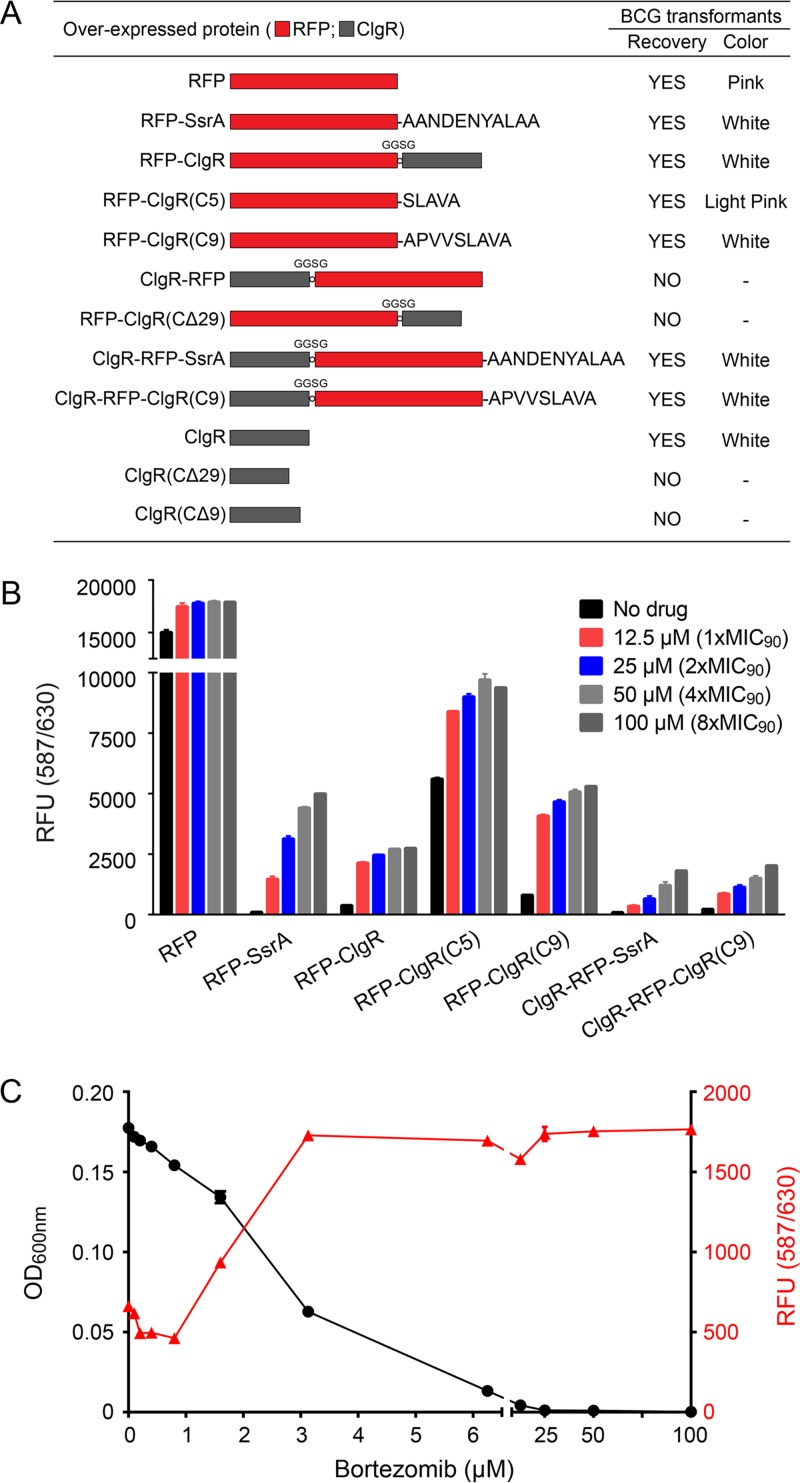FIG 2 .
ClgR is a substrate of mycobacterial Clp, and its accumulation is toxic for M. bovis BCG. (A) Schematics of ClgR-RFP fusion proteins, their transformability, and colony color of M. bovis BCG transformants. Red, RFP; gray, ClgR. “Recovery” indicates whether transformants with the respective constructs could be obtained. “Color” indicates the color of the M. bovis BCG colonies. “GGSG” indicates the peptide sequence used as a short linker inserted between RFP and ClgR. Primers used and plasmid construction procedures employing the episomal plasmid pMV262 (18) to generate the respective strains are listed in Table S3 in the supplemental material. All ClgR-RFP fusion proteins as well as the ClgR nonfusion proteins were overexpressed in M. bovis BCG under the control of the constitutive P-hsp60 promoter (17). Note that the transformation efficiencies for the overexpression constructs for which colonies could be recovered were in the range of 5 × 104/µg DNA and were similar for all constructs. Colony sizes were also similar with the exception of RFP-ClgR, ClgR-RFP-SsrA, and ClgR-RFP-ClgR(C9) transformants, which displayed somewhat smaller colony sizes. For overexpression constructs for which no transformants were obtained, the plates were incubated and observed for 2 months. (B) Fluorescence measurements of M. bovis BCG cultures carrying various ClgR-RFP fusion constructs shown in panel A without and with 24-h bortezomib treatment. (C) Effect of increasing bortezomib concentrations on fluorescence and growth of M. bovis BCG cultures expressing the RFP–full-length ClgR fusion protein (RFP-ClgR [A]). RFU, relative fluorescence units. The bacteria were grown in 96-well plates for 5 days as described in the text with a starting OD600 of 0.05. Turbidity and fluorescence measurements were taken after day 5 with an Infinite M200 Pro plate reader (Tecan). Data shown in panels B and C represent means ± standard deviations from two biological and four technical replicates.

